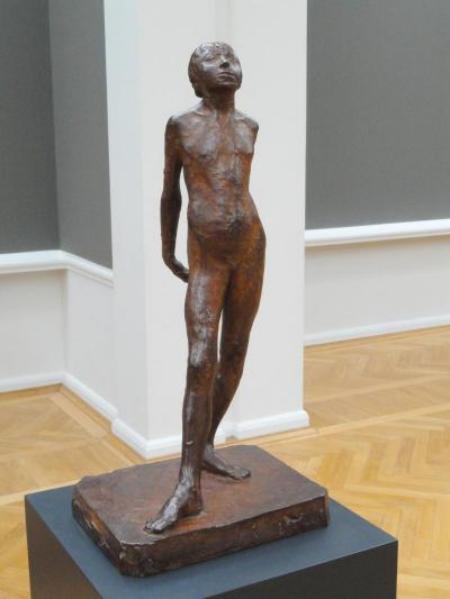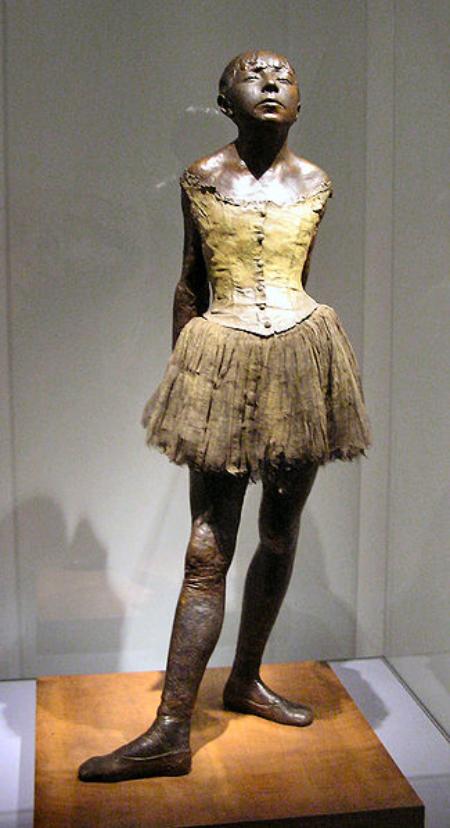[Special note: this title is now available in both the original, full-price version and as a bargain in the Arthaus "Elegance" budget-priced series. See the end of this review for information on both versions.]
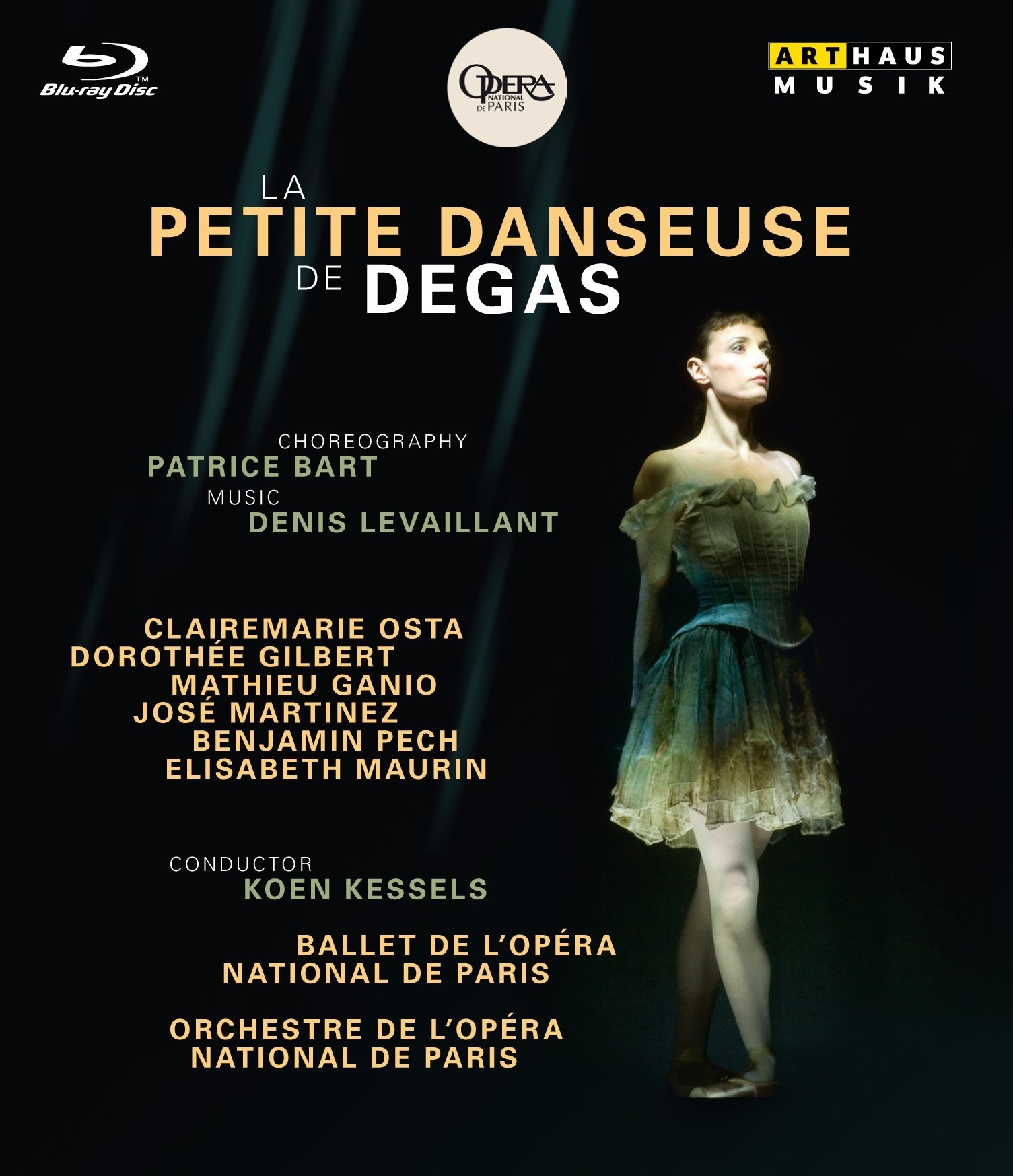
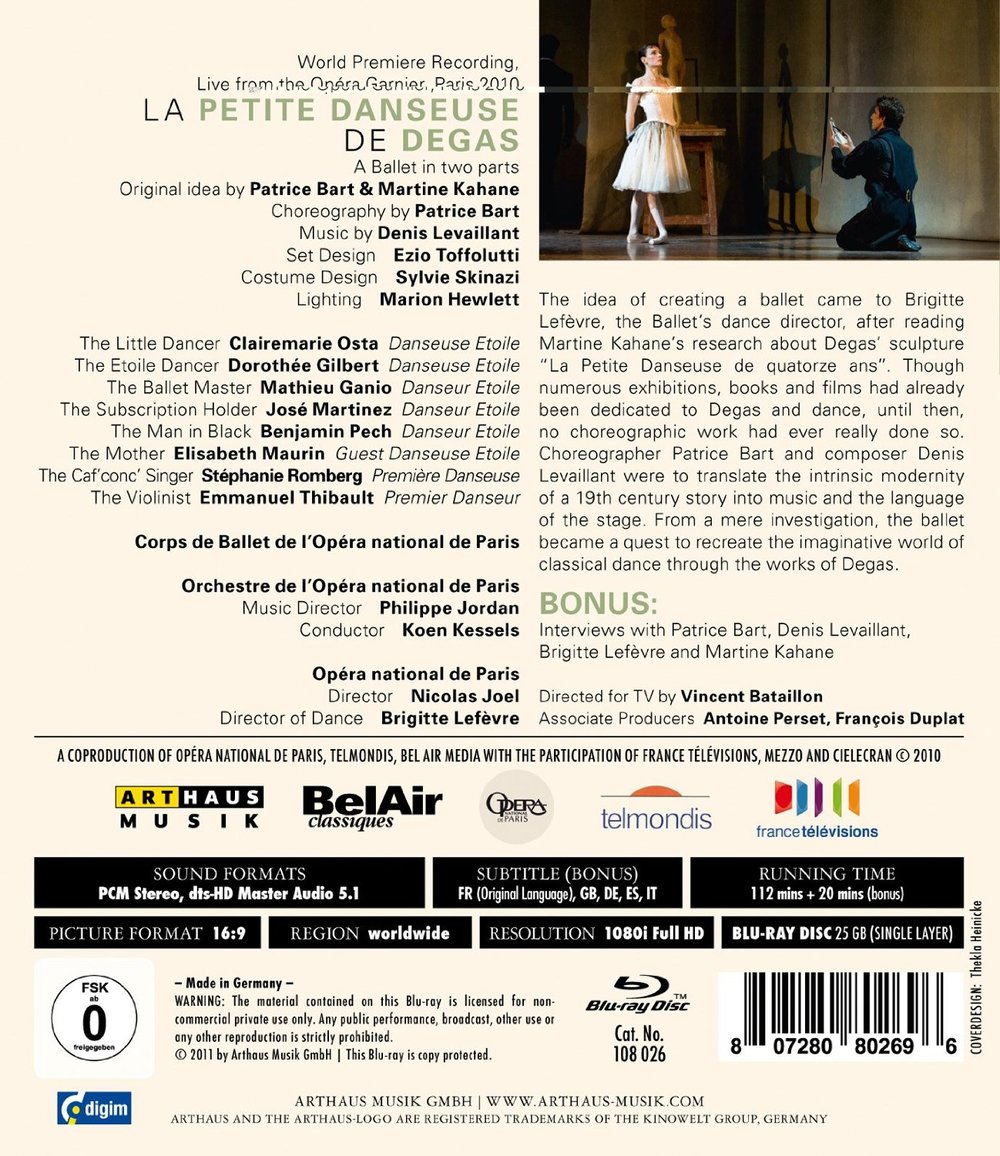
La Petite Danseuse de Degas ballet. Original music by Denis Levaillant. Choreography by Patrice Bart from an original idea by Patrice Bart and Martine Kahane. Directed 2010 by Nicolas Joel at the Opéra National de Paris (Opéra Garnier). Stars Clairemarie Osta (The Little Dancer), Dorothée Gilbert (The Star Dancer), Mathieu Ganio (The Ballet Master), José Martinez (The Subscription Holder), Benjamin Pech (The Man in Black), Elisabeth Maurin (The Mother), Stéphanie Romberg (The Night-Club Singer), Emmanuel Thibault (The Violin Player), and Le Corps de Ballet de Opéra National de Paris. Koen Kessels conducts the Orchestra of the Opéra National de Paris. Set design by Ezio Toffolutti; costume design by Sylvie Skinazi; lighting design by Marion Hewlett; photography directed by Madjid Hakimi. Directed for TV by Vincent Bataillon; produced by Antoine Perset, François Duplat, Henis Morlière, and Emma Enjalbert. Released 2011, disc has 5.1 dts-HD Master Audio sound. Grade: A
Hi! I'm Marie van Goethem. I lived with my mom and two sisters in Paris in 1880. Our father had died. My mom worked hard as a laundress. She went to all the fine houses with a wheelbarrow to pick up clothes and linens to wash. She knew everybody. She learned that girls could study ballet at the opera, and she got all three of us in the ballet school. Here you see my mom and I waiting for an audition:
Here's another picture showing what my mom (Elizabeth Maurin) really was like—forceful and ambitious—at least for her girls:
We girls helped mom at the laundry:
Mom also found us jobs posing as models for artists. Every cent went toward keeping us in the ballet school. We worked and danced. Most days we had something to eat, but we all stayed hungry. Mom said it was worth it because we might get a job one day as a dancer. And if we didn't get a job, we would still learn a lot about talking to wealthy gentlemen and how to please them. One of my sisters did become a dancer and later a teacher of ballet at the Garnier! The other sister and I eventually had to make do by pleasing gents.
When we poised nude, mom got a bigger fee. That's how I became the model for this little statute (about half my size) when I was 14. The statute was made by an artist named Edgar who was often at the ballet school drawing there:
Here's what I (Clairemarie Osta in center) looked like at the school admiring my favorite Etoile (Dorothée Gilbert on the right):
Here are some pictures showing what the classes looked like. You can see the mothers of some of the girls dressed in black hovering around the little stove. The men in top hats were patrons of the ballet. They had tickets to everything and came to the classes and rehearsals, dressed in splendid finery, to watch us starving girls. They called us their "little rats.":
The music came from a sole violin player (Emmanuel Thibault):
Some of the the gents could dance:
Here are pictures of the classes the way Edgar painted them:
Edgar (Benjamin Pech) was different from the gents (who were just enjoying themselves). He worked hard on his drawings and sculptures. He seemed to care about me and the others he drew. He had me pose in dresses in the same position as the nude statute:
There was one tall gent (José Martinez) whom my mom and other girls liked. I had a crush on him too. I dreamed that one day I would go to the grand ballet ball and dance with him:
But where I actually did meet him was at the Le Chat Noir (The Black Cat). The club was full of beautiful girls:
Mom made me sit in the tall gent's lap! I was the youngest girl there, and our gent got interested:
But then some other girls dragged him off to see something nasty. That's when I made my mistake. I got the gent's wallet out of his jacket. I only wanted one bill to buy some food for us all. But the bills were so big! I got confused how to put the wallet back, and suddenly I got caught:
So the day I finally met the tall gent was the day he sent me to prison. In prison I dreamed that my special Etoile would visit and comfort me. But, of course, she didn't:
Everybody at the school forgot me except my sister, who had been promoted. She warned me to never come back and make things harder for her. Nor did I want to see again the place where I first saw the tall gent. So I went back to helping my mother with the laundry:
I told you that Edgar cared. He even make paintings of the women who do the laundry:
And when everybody else forget me, Edgar didn't. One day I learned that he had made a tiny dress, and wig of real hair, and ribbons for the nude statute. He dressed the statute and showed it in a glass case at an art exhibition! I was proud of that until I learned that people hated the little dancer because they said she was ugly. That hurt me, but I knew that Edgar wasn't calling me ugly—he was showing how hard life was for us:
I soon forgot about the Little Dancer. And that's the end of my story. Well, there's more, but you wouldn't want to hear it.
I never knew that people kept arguing about the Little Dancer. I never knew that Edgar's family later made bronze castings of the fragile wax girl and that 28 of the bronze copies were put in famous museums each dressed a little differently. Now millions of people all over the world go each year to see me and to think about my life. That's something I never could have dreamed of.
------
Hi, yes, this is a review of the Arthaus Musik HDVD of La Petite Danseuse de Degas. I thought Marie could speak for herself, but I should tack on a few words about this new work as performed by the Paris Opera Ballet. First some credits: the images of the paintings above all come from the wonderful website www.edgar-degas.org, where you will find a splendid image of every artwork Degas left behind. The photos are from the Google collection of hundreds of images of The Little Dancer.
This production is especially poignant for ballet lovers in France because it's a true (more or less) story from the history of Garnier Opera building and its ballet school and there is today a bronze Little Dancer of 14 Years at the Musée d'Orsay. The 1880s was a time of decay and weakness at the POB, and dance students had to fend for themselves in an atmosphere of exploitation that seems rather shocking today. The story of Marie van Goethem will likely be told at the POB for many seasons to come. But because this work is so closely linked to a particular ballet company, I wonder if ballet companies in other places will want to invest in it.
There are two reasons why ballet folks should pay attention to this title. First, it brings to the attention of the public how hard it is to be a ballet dancer. Second, there's the issue of prostitution in ballet.
Today the students and dancers in Paris are elite civil servants with good benefits and the same prospects for retirement that are enjoyed by police and military officers. But nothing will ever be able to change the fact that making a career in ballet is a high-risk proposition full of exhausting work, the constant stress of grinding competition, a high probability of failure due to competition or injury, and little to fall back on if you don't make it to retirement. Ballet students and professionals today deserve the same compassion from us that poor Marie should have had, but never got.
Prostitution in ballet was not new in 1880. And in fact it's still around in 2013. Early this year, a well-respected dancer with the Bolshoi Ballet created headlines accusing the Bolshoi of prostituting its junior dancers. They are allegedly pressured to entertain oligarchs and persons with political connections by attending glittering social events with them. At the end of the evening each girl decides for herself how intimate the occasion will turn out to be. H'mm. I doubt the Bolshoi will mount a production anytime soon of La Petite Danseuse de Degas. But maybe other companies will see that this libretto is of general significance, and not just Paris trivia.
Denis Levaillant wrote the music for this in close collaboration with the choreographer and conductor. Early critics said the music is too acerbic. This is contemporary music for sure, but I find most of it to be quite lyrical or even romantic. And of course things do get wild and raucous when the scene shifts to the Black Cat Club. The music is full of vivid orchestral colors and always seems appropriate to me for the action on the stage. The sets and costumes are all appropriate for a modern telling of this this 19th century story. The video is also fine. Finally, I enjoyed the bonus extras consisting of well-planned and executed interviews with the key artists who created this ballet. And the dancing is so good, you almost take it for granted. In short, the libretto is very simple, but the execution is admirable. And the work is more universal that you might think when you first look at the artwork on the keepcase. I originally gave this a B+. But after playing this again several times recently I have, in honor of poor Marie, bumped my grade up to A.
OR
And here's the keepcase art for this recording in the Elegance series from Arthaus:
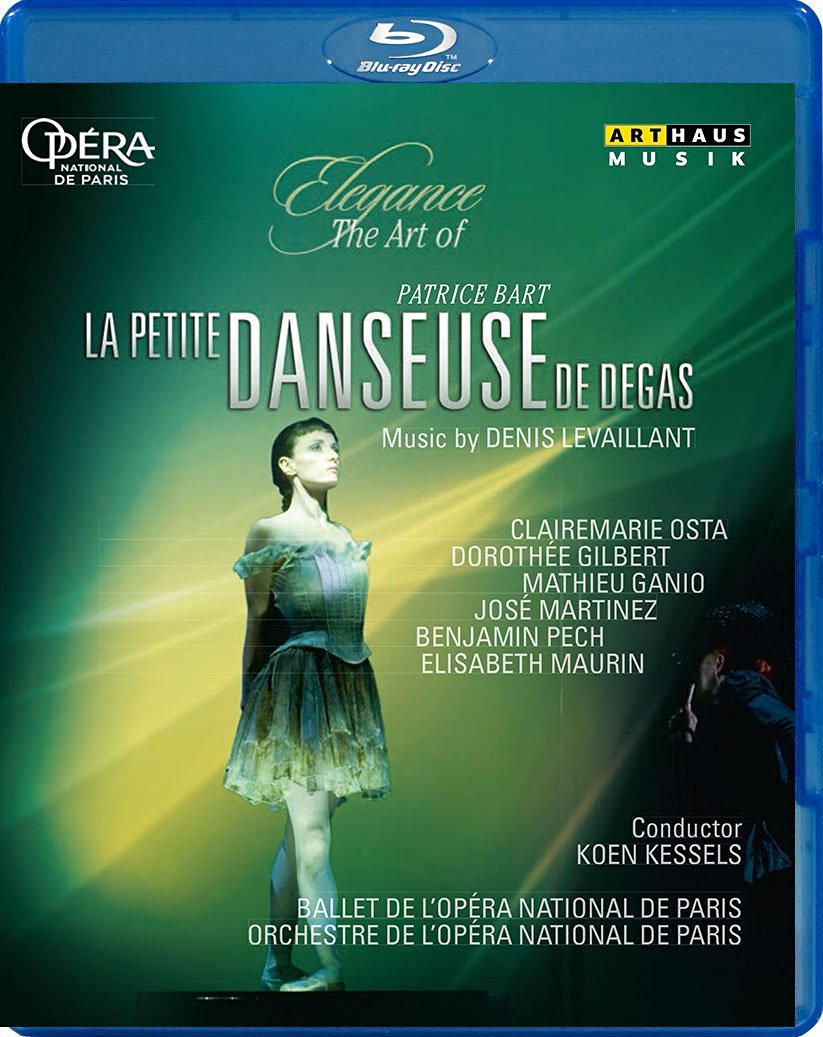
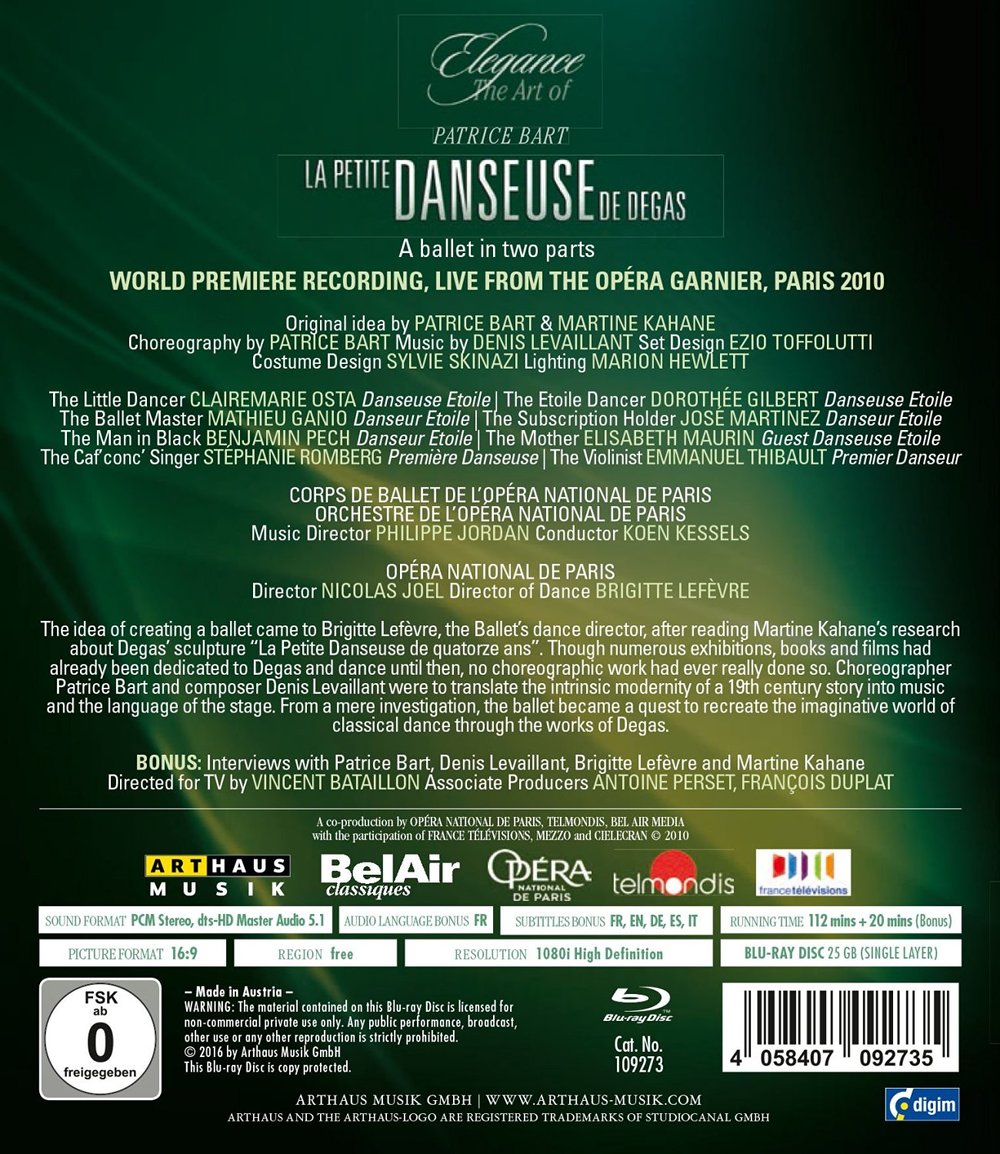
OR



